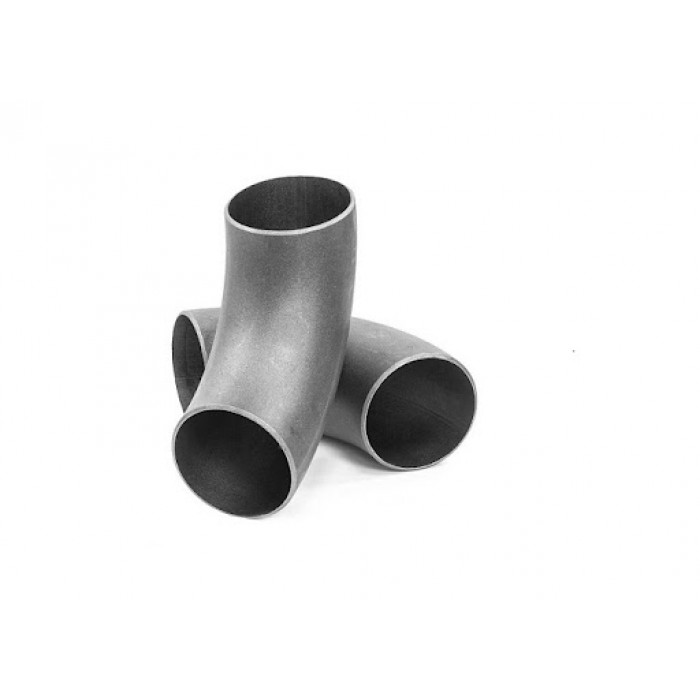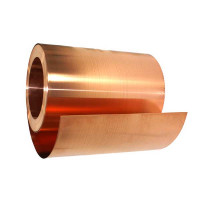Uman pipeline fittings - steel branch (angle), transition, tee, plug, flange, spur, thread available and for production stainless steel, galvanized, black
Pipe fittings are a technical device installed on pipelines, equipment and vessels and designed to control (shut off, open, regulate, distribute, mix, separate) the flows of working media (liquid, gaseous, gas-liquid, pulp, steam, plasma, powder, suspension, etc.) by changing the flow area.
Types of fittings
By function
Shut-off valves are valves designed to shut off the flow of the working medium with a certain tightness. Including:
Shut-off valves are valves with a minimum response time due to the requirements of the technological process.
Drainage (drainage) valves - designed to discharge the working medium from tanks (reservoirs), pipeline systems.
Control fittings - designed to control the flow of the working medium into the control and measuring equipment, devices.
Control valves are valves designed to regulate the parameters of the working medium by changing the flow rate. Including:
Reducing (throttle) valves are valves designed to reduce (reduce) the working pressure in the system by increasing the hydraulic resistance in the flow path.
Shut-off and control valves are valves that combine the functions of shut-off and control valves.
Protective fittings are fittings designed to protect equipment and pipelines from unacceptable or not provided by the technological process changes in the parameters of the working environment, as well as to shut off the flow. Including:
Reverse valve - designed to automatically prevent the reverse flow of the working medium.
Shut-off (high-speed) fittings - designed to automatically prevent the flow of the working medium from exceeding the speed.
Safety valves are valves designed to automatically protect equipment and pipelines from unacceptable overpressure by relieving excess working medium.
Distribution-mixing fittings - designed to distribute the flow of the working medium in certain directions or to mix flows. Including:
Distribution valves - designed to proportionally divide into two or more outgoing flows from the total incoming flow when the valve position is changed.
Mixing valve - designed to affect the proportions of two or more incoming streams in order to obtain a total outgoing stream when the valve position is changed.
Phase separating fittings are fittings designed to separate working media in different phase states, or with different densities. Including:
A steam trap is a fitting that removes condensate and does not pass or only partially passes overheated steam.
By area of application
General industrial fittings - having a multi-industry application and which do not impose any special requirements of a particular customer.
Valves for special purposes - designed and manufactured taking into account the special requirements of the customer in relation to specific operating conditions.
Valves for hazardous production facilities - designed for use at production facilities that contain hazardous substances and use equipment operating under a pressure of more than 0.07 MPa or at a water heating temperature of more than 115 ° C.
Cryogenic fittings — intended for operation on cryogenic environments.
Sanitary fittings - installed on sanitary equipment.
Marine valves - installed on pipelines and equipment of ship systems.
Wellhead fittings - designed to control the flow of the medium in well pipelines and the annulus, as well as to tie the well pipeline.
Xmas tree fittings are intended for equipment of the mouth of oil and gas wells.
Power valves are specially designed for installation on equipment and pipelines of power facilities.
By hull design
Through-hole fittings - connecting pipes of which are coaxial or mutually parallel. Including:
Direct-flow valves - in which the axis of the spindle or stem is not perpendicular to the axis of the body connections, usually at an angle close to 45 °
Axisymmetric (axial) valves - in which the movable part of the shutter moves along the axis of the body nozzles
Corner fittings - in which the axes of the inlet and outlet pipes are located perpendicular or non-parallel to each other
Multi-way valves - in which the working medium enters simultaneously or alternately into one or more branch pipes and exits simultaneously or alternately into one or morenozzles with a total number of nozzles more than two. Including:
Switching devices - three-way fittings used in safety valve blocks
By connecting to the pipeline
Flanged fittings - having flanges for connection to a pipeline, equipment or vessel
Wafer fittings - flangeless, installed between pipeline flanges
Fittings for welding (welded fittings) - having nozzles for welding to a pipeline, equipment or tank
Coupling fittings - having connecting pipes with internal thread
Tsapovaya fittings - having connecting pipes with external thread and shoulder
Choke fittings - having connecting pipes with external thread
By seal type
Gland - fittings, in which the tightness of the pairing of a moving part with a fixed one in the cover or housing in relation to the external environment is ensured by a stuffing box seal;
Bellows - fittings in which the tightness of the movable interface in relation to the external environment is provided by a bellows;
Membrane - fittings in which the tightness of the movable interface in relation to the external environment is provided by a membrane. In some designs, the membrane is also a shutter;
Hose - fittings in which the regulation and shutdown of the flow of the medium is carried out by clamping the elastic hose. The hose ensures the tightness of the entire internal cavity of the fitting in relation to the external environment.
Flanges that complement the reinforcing structure are fastening elements in the form of metal flat rings or disks with holes around the perimeter. Bolts are threaded through the holes, or studs are tightened, providing a reliable connection. Flanged fittings are a combination of various types of pipeline products with this type of joint, it is common in installations operating with a wide range of pressure and temperature.
Pipe fittings
Flanged fittings can be made of steel, they can work in a wide range of pressure and temperature
The ability to disassemble the mount allows you to revise or repair fittings and pipelines. The design, dimensions, requirements of reinforcing flanges comply with GOST. Being part of the reinforcing body, the flanges are cast from cast iron (gray, malleable) or steel. A similar flange is welded onto the pipes.
Flanged fittings are used for pipes with a diameter of 50 mm, have impressive dimensions and weight. She is not afraid of pressure drops, the temperature of the working environment can reach 400 ° C, any position in space is suitable.
During the installation of the pipeline, it becomes necessary to connect pipes of different materials (steel, metal-plastic, polyethylene, polypropylene) and diameter values \u200b\u200btogether, or a flange element must be built into the network in a section of particular importance where an emergency is possible. In this case, connecting fittings are used - auxiliary parts of the docking (flange adapters, clamps, couplings, plugs, bends, crosses, tees) that do not have a shut-off and control mechanism in their design.
Such fittings allow for fast, durable installation, replacement of parts, revision and repair of the pipeline. The connection method is chosen for each type of pipe according to its intended purpose. Docking for metal-plastic pipes is preferably crimp, and for polypropylene - welded. The joint is solid, tight, durable. The diameter of the connecting fittings varies from 25 to 2020 mm, the nominal pressure is from 1 MPa to 4 MPa. Production material: cast iron, steel, plastic. Connection type - threaded, flanged, crimped.
Connecting pipeline fittings made of stainless steel are especially durable, resistant to aggressive media, corrosion, temperature, wear, and therefore are indispensable in the chemical, oil and gas, food, pharmaceutical industries, as well as nuclear power plants.
Stainless Pipe Fittings
The use of stainless steel made it possible to obtain a qualitatively different type of products that do not interact with the working medium (without changing its properties). In the food industry, such pipeline parts are indispensable, they are environmentally friendly, chemically inert, stable in all respects.
Fittings made of stainless high-alloy steel (flanged, connecting, taps, gates, valves, steam traps) are included in a stainless pipeline transporting drinking water, dairy products, oils, alcohol with the possibility of cleaning the system after the production cycle. In the brewing and wine industry, stainless parts make up systems with adjustable temperature, pressure, distribution, mixing.
Of course, stainless parts are also applicable to domestic and industrial plumbing systems, heating.
Pipe fittings
Fittings for metal-plastic pipes
Auxiliary parts for metal-plastic pipelines of internal laying are used to control the flow of water or coolant when piping to plumbing, water heating, heating devices.captivity, plums. These are taps, valves, gates, valves, gate valves, mixers, pressure regulators, check valves designed to work with medium temperatures up to 95 ° C and pressure of 16 atm.
Pipe fittings
When installing pipelines from metal-plastic pipes, brass fittings are most often used.
The fittings of metal-plastic pipelines used in domestic conditions are small in size and look aesthetically pleasing, have a threaded and press connection, symbols, which greatly simplifies installation. Manufactured from nickel-plated, corrosion-resistant brass. The most commonly used are various types of connecting fittings and ball valves.
Fittings for polyethylene pipes
As in metal-plastic pipelines, fittings for polyethylene pipes are used in pressure and non-pressure systems. The widest range of connecting elements for clamping, welding or flange connection. The welded joint of polyethylene products is considered the most reliable, hermetic, and forms a single cast body.
The regulation of the movement of the flow of the medium of these pipelines is carried out using polyethylene (HDPE) or brass taps, valves, dampers, designed for pressure up to 16 atm and a flow temperature of 45 - 80 ° C (hot water supply), not subject to corrosion. Ball valves made entirely of polyethylene may be subject to deformation if the temperature regime is not observed.
Fittings for polypropylene pipes
Shut-off and control pipeline fittings, types of connecting fittings for polypropylene pipes are the same as for polyethylene pipes. Designed for pressure up to 20 atm, medium temperature up to 90°C. Many manufacturers now produce models of polypropylene elements with a ferrule made of hot pressed nickel-plated brass, which makes up a monolithic structure that is resistant to thermal deformation.
The presence of built-in brass threaded collapsible connections in polypropylene fittings makes it possible to equip a plastic pipeline with metal fittings. The cost of polyethylene and polypropylene auxiliary parts is much lower than metal counterparts.
No questions about this product, be the first and ask your question.


